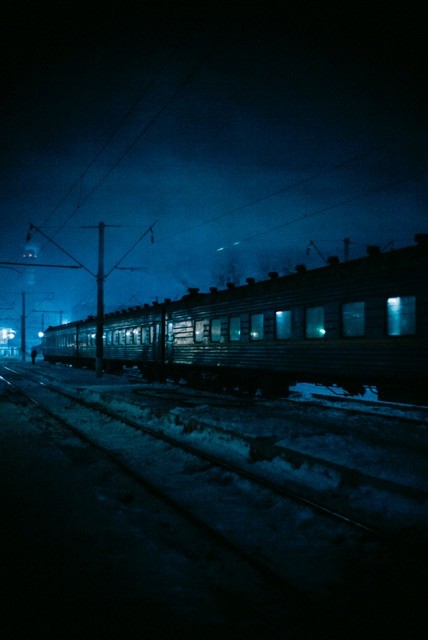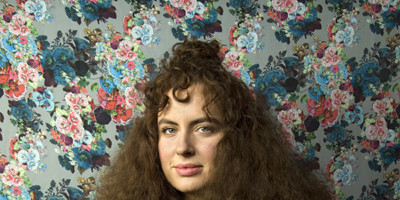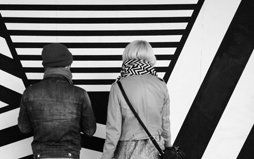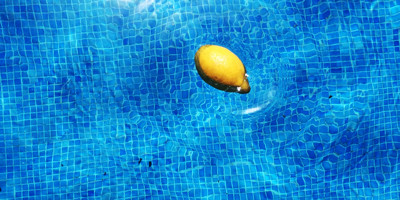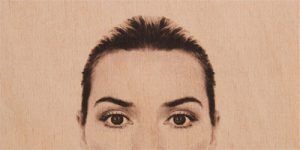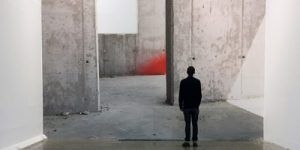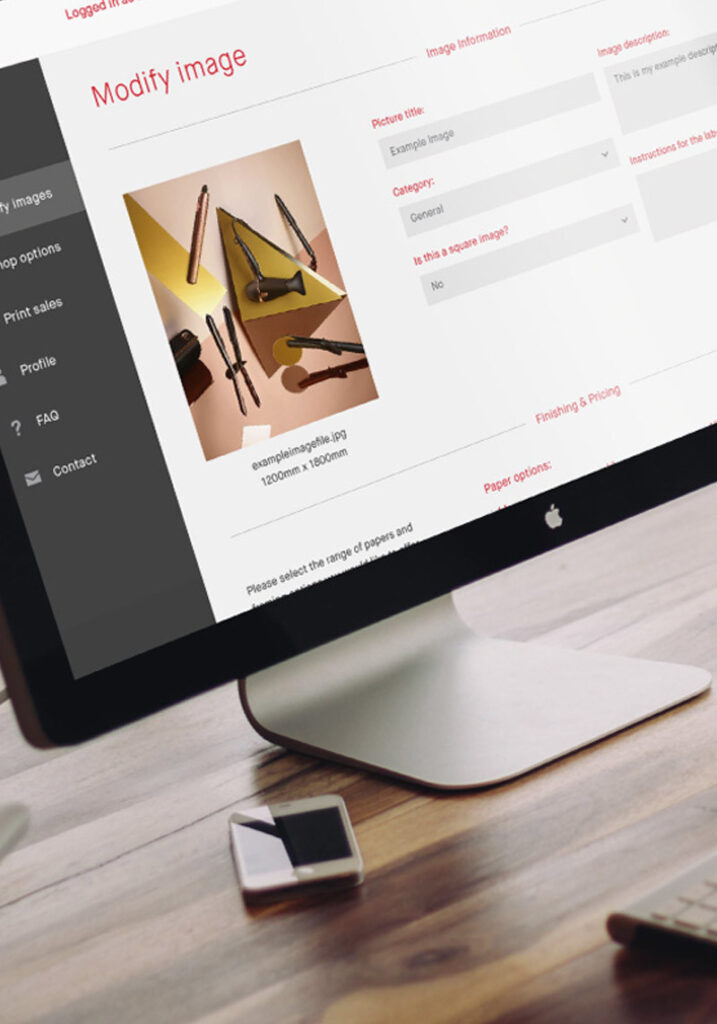Can you tell us a bit about ‘A Wounded Landscape’ what prompted you to undertake the project and had you always determined that it would be long term commitment to the story?
I have wanted – or perhaps without realizing it felt the need – to make a piece of work about the Holocaust for over 20 years now, ever since I started taking photographs.
It is something I felt was of great importance, to talk about, to share, to start conversation about. But to be honest I simply never felt I was good enough, I never felt I could make the right photographs that a subject matter like this demands, or even therefore talk about it in the right way.
I did not have the right voice or visual language.
In 2015, after I had completed The Last Stand I felt, finally, that maybe I now did command a visual language that I hoped would be sensitive enough to talk about this tragedy. A quiet enough voice, but still insistent, to talk about a history that I felt does not need to be ‘shouted’ about but must not be ignored, forgotten or even worse, denied.
So when I began to research into it and try to work out how I would approach it, it was soon apparent the time it would take and it was pointed out to me the potential toll on myself also. I had ideas on how I wanted to make it, what I wanted to talk about and I took those with me to the first location I visited in the South East of France.
But that all changed, on my first late afternoon photo-shoot. I was going to work similar in method to what I had done with The last Stand, but as soon as I covered my head with my dark-cloth and peered through the ground glass screen of my large format camera it felt completely and utterly wrong to me. I felt that I was gazing, objectively. And it was not right.
My initial though was to photograph these locations from a distance, on the wider landscape around them, as I had done my previous work, but after dismantling the large format camera and doing some test with both my Hasselblad and digital camera I was left cold. These images I was making were objective, wrong, cold, calculated.
But I already knew what I had to do and had avoided thinking about.
So the next morning I went over the former Internment camp boundary, climbing over the mass earthworks border that surrounded it and into the space itself.
And there, after two hours of searching for the Barrack ‘K12’ the former children’s barrack, I found my voice. The fading paintings on the walls, made by the children over 70 years ago, with paint provided by a Swiss red cross worker, cracked roof tiles on the ground and some small flowers in the surrounding grass. I was told what I needed to do. To tell the stories of those children. One of those children. And more. Stories of individuals who could then reflect the stories of a countless hundred others, a 1000 others, a million others.
I made work there and back in the UK spoke with others, showed them what I was doing, had conversations and began to plan the time ahead.
I knew it would take but I did not realize quite how much or the effect it would have on me.
Your projects are intensely researched and undertaken and I often see them as being autobiographical in many ways – how do you decompress what you have experienced into your normal family life?
I think the simple answer is I don’t know that I do manage to really ‘decompress’.
I think that as a photographer, or any other medium for that matter, if you really listen to these stories as they are told to you, give your self up to them almost, it’s impossible to turn off the you are back from location. And I’m ok with that as for me I need to stay tuned in to the story so I can continue my work on it and into the next.
All that said I am very aware at all times how lucky I am that I have this choice. I have the choice to come home, to stay tuned in or turn off, to keep it in my view or to close my eyes to it. I have the freedom to make those decisions and it is that freedom that makes it an easy decision for me; because I can stay awake to the story, the subject matter, but do it form the relative comfort and security of my home life. I’m lucky.
So I let it wash over me, I take the small moments when I ‘break down’ in my car to an unconnected song or lyric on the radio or my playlist, the something I see takes me back to a location.
The more I made this work the stronger those connections would become because with each story came another visual trigger for me when I then made work at the associated locations. A trigger to a word or phrase told to me by Rita or Eugene or Anna about what had happened at these places.
But I don’t think it is possible to make work on this subject, this type of subject, from a distance. I mean you can but I feel it would be a different type of work made.
And then of course there is the matter that one of the 22 stories in this work, ‘A Wounded Landscape – bearing witness to the Holocaust’ is that of my own family. But maybe that is a conversation for another day because there is so much to talk about there.
You have an established career as a commercial photographer, how do you balance the substantial workloads that you encounter for both commercial and personal projects? Also do you think it is important to be categorized as a photographer – you balance distinct categories as a commercial and a documentary photographer?
Until March last year most of my income came from my commercial work (interiors and architectural based photography) for designers, hotels, etc., (with some extra from book and print sales). For a long time I had used this commercial income to put food on the table, pay bills, etc but also to buy the time to make my project based work. So I would split the time between them and I was lucky enough that the two would work around each other.
When I started a new project I would get it up and running with a bit of income from my commercial work and then use those first few shoots to look for funding. It took time but would come in the end.
The pandemic flipped everything on its head and with my commercial practice dropping off overnight I focused on my project work and the books and print sales from that, moving into self publishing the 3rd edition of The Last Stand, and its reprint and then Travelogue 1. The new work ‘A Wounded Landscape’ will also be self published. So now most of my income is from my project based work in book and print sales, but because of the way it has happened it has not made me change the type of documentary (project) work I want to make. Making my income from that can now serve the dual purpose of food on the table and starting new projects…and then as ever look to find funding to make it.
For me because my commercial work and my documentary work was so distinct I have always categorized them for myself in descriptions. That sits better with me but if my ‘commercial’ work was much more editorially focused perhaps the distinction would be more blurred. (That is a big self promo by the way as I want to do more editorial based work in the coming years.) For others they see no need or desire to distinguish but I think we can all have our own view on these things I think.
You elect for much of your work to be viewed in book form, what is it about a publication that suits your work and what does a book provide that say an exhibition or web based platform does not?
I feel that each medium can provide its own advantages to the viewer experience. For instance I love to give talks about the work because it allows the opportunity to weave the stories around each other and bring in audio also. You also get to react to the audience reaction.
And exhibitions can be wonderful with a work such as ‘A Wounded Landscape’ as it allows for print and projection and audio and text to all interweave for the viewer.
But for me I love the book form as it allows a very personal experience for the reader / viewer. It allows the viewer to immerse themselves in the work, to pore over the images and text, to rally get to know the people and places in the book in their own time. Strangely I find a book harder to avoid because you can put it down if you want but it will always be there, on your desk or shelves, insisting the reader to pick it up, open it, read it, look at it, take it in, understand it.
Off course the ideal scenario is combination of all these forms as that way the work can reach its widest audience so with that in mind once the book is published in May / June I then hope to be able to work on both exhibiting the work and talking about it. As much as I can, to share the stories a much as I can, because that is the point. To share, to learn, to bear witness.
